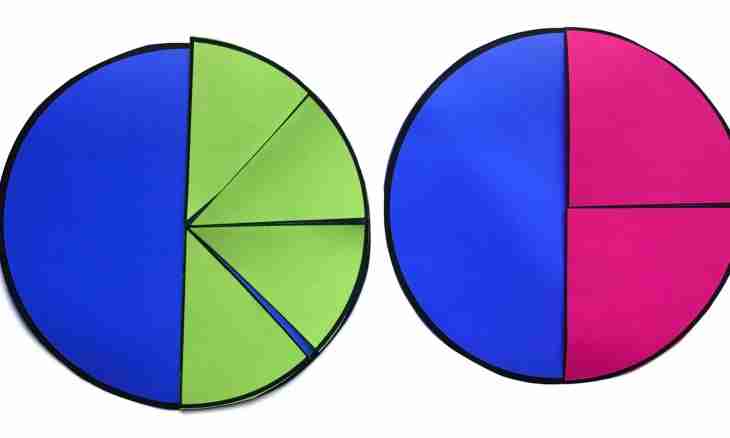Within a school course of mathematics the pupils face nonintegral numbers — fractions. That mathematical operations with fractions were clear to the child, it is necessary to explain what is fraction. It is possible to make it, using usual things and examples around.
It is required to you
- - the cardboard circle divided into equal sectors;
- - objects which can easily be divided (apples, candies, etc.).
Instruction
1. Take pear and offer it to two children at once. They will answer that it is impossible. Cut fruit and again offer children. To everyone will get on an identical half. Thus, the half of pear is a part from the whole pear. And pear consists of two parts.
2. One half is a part from whole, 1/2. The fraction means - it is number which is a part of a subject it is, less, than one. Also the fraction is quantity of parts from some thing. To children to understand concrete things much more simply, than abstract abstract concepts.
3. Get two candies and ask the child to divide them equally between two people. He with ease will make it. Get one candy and again ask it to make the same. The way out will be found if to cut candy in half. Then you and the child will have to about one whole candy and on a half - on one and a half candies.
4. Use a cutting cardboard circle which can be divided into 2, 4, 6, 8 parts. Count with the child how many in a circle of parts — for example, six. Pull out one section. It will be a part from the total number of sections (6), that is, one sixth.
5. How many parts you took - it is numerator, that is, unit. A denominator - it into how many parts you divided a circle, that is, six. Means, the fraction shows the attitude of the pulled-out sections to their total number. If you take four more sections, then the pulled-out sections will be five, so and the fraction will take a form — 5/6.
6. If the oral account is mastered by the child already well, suggest to play to it a habitual game, having a little changed rules. Draw on asphalt with a piece of chalk of classics and put down not natural numbers (1, 2, 3...), and fractional (1, 1 1/2, 2, 2 1/2...). Explain to the child that between numbers there are intermediate values — parts. For the same purposes it is possible to use a ruler.
7. Explain that the number zero cannot stand in a denominator. Zero — means "nothing", and on "nothing" it is impossible to divide. For descriptive reasons draw the plate that at the child the visual memory worked and he remembered this rule.

